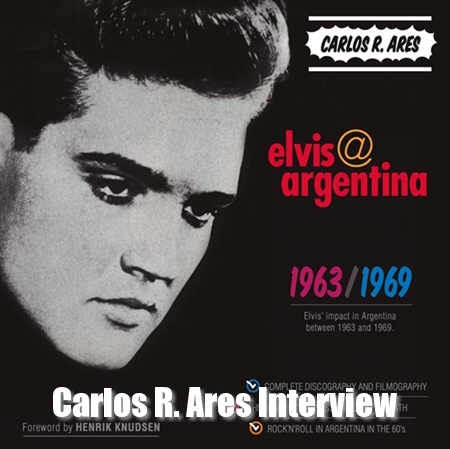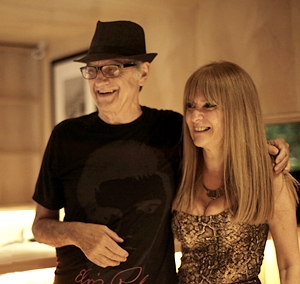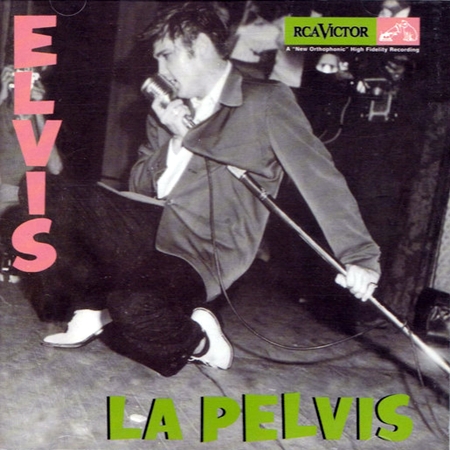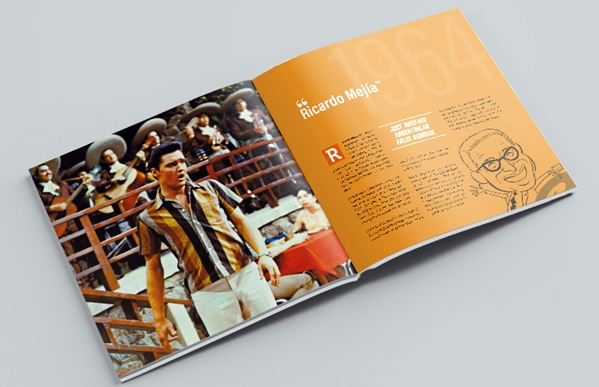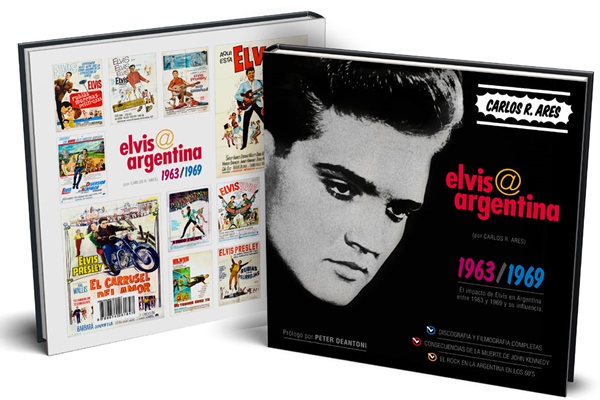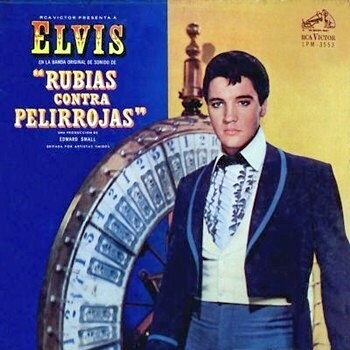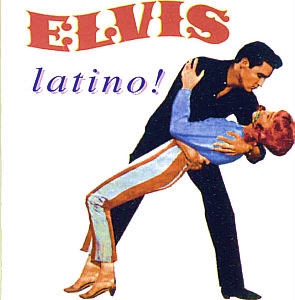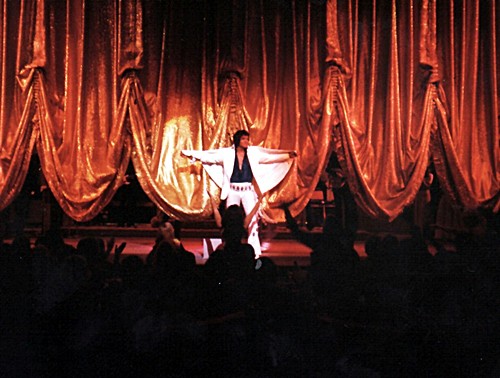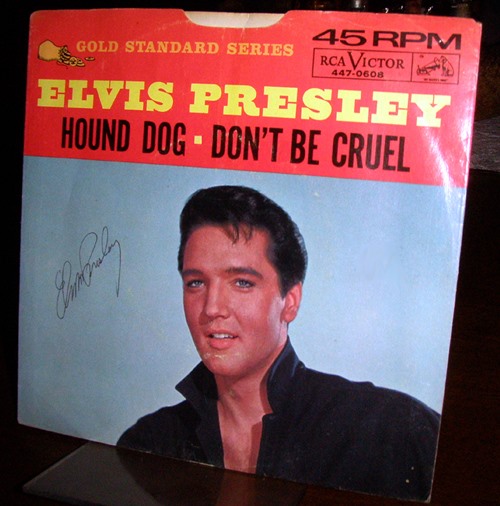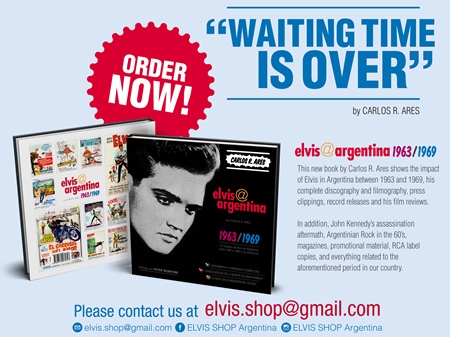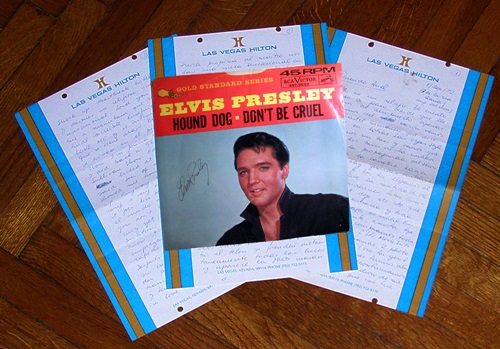 |
 |

EIN: Carlos, it’s great to be talking with you. Congratulations on your new book, 'elvis@argentina 1963-1969'. EIN: Before we discuss your latest book, please tell us about the Carlos Ares story. Carlos Ares: I am a co-owner of ELVIS SHOP Argentina founded on February 14th, 1992. Even though I graduated with a degree in Civil Engineering in 1973, I have devoted a great deal of my life to the most amazing artist that ever walked on Earth. It all started way back in early ’57 when, at the tender age of 7, I heard “Lawdy Miss Clawdy” playing on the radio in my daddy’s car. EIN: You have been involved in the Elvis world in South America since Elvis first broke in the mid-1950s. You will have experienced many highs, lows and changes regarding Elvis since then. What are some of the highlights for you in the past 65 years? CA: There are SO many highlights!
EIN: That is such an interesting career. Tell us more about your time working with Argentine rock bands. CA: It all started in 1980 when I hired the legendary Rock singer Moris while vacationing in Madrid, Spain, in order to tour Argentina. It was such a big success I decided to set up a management agency. And my agency was considered one of the best here in Argentina during the 80s.
EIN: Have there been any lowlights? CA: After Ricardo Mejía left, RCA simply lost interest in Elvis and a lot of albums were never released in our country. There were no new LPs in the period comprised between the release of Paraíso Hawaiano (Paradise, Hawaiian Style) and Elvis - En Vivo! (NBC-TV Special). Obviously, Elvis’ demise was the ultimate lowlight for any Elvis fan, and I was not an exception. EIN: Ricardo Mejía seems to have been a very important part of promoting Elvis and the new youth music. CA: Yes. Ricardo Mejía was the first producer to acknowledge a new breed of both Argentine singers and local bands that were playing Rock’n’Roll in juke joints. He gathered them for RCA and also had a TV show featuring them which was a major success. Mejía, a marketing genius.
EIN: Carlos, your latest book. In 2018 you published the first volume in your Elvis@argentina series and it was a great success. Now in 2020 comes the second volume. Are there particular things in the latest book you are especially proud of? CA: I am very proud of John Kennedy’s assassination aftermath analysis. I think it clearly explains why the Beatles and the so called British Invasion took America by storm. EIN: Going by the archival material included in elvis@argentina 1963-1969 it appears the gossip magazines and newspapers were as active in South America as they were in other countries. There were stories suggesting Elvis would be visiting Argentina. How did fans react to these claims at the time? CA: First of all, we need to rewind and go back to the 1950s and 1960s and consider there was no Internet, no fax, no Google. But there was fake news! EIN: On page 97, in relation to apparent quotes about each other by Elvis and Frank Sinatra, you use the caption “Yellow journalists...”. What does this mean? CA: Yellowish press refers to news with flashy, scandalous, or exaggerated headlines to increase newspaper or magazine sales, upheld with no evidence whatsoever by what I call “yellow” journalists.
EIN: In the book you show the covers and label images for many Elvis records released in Argentina. How popular has Elvis been on the top 40 charts in South America? (eg. number of #1 and Top 10 hits) EIN: And how successful were his films? In the 50’s and early 60’s they were so successful, people danced in the aisles to songs like Jailhouse Rock and Frankfurt Special during the projection. EIN: Are you pleased with the sales of the latest volume? CA: Fortunately, sales are even better than for the previous volume. We are getting orders from all over the world. EIN: That is fantastic! EIN: Are there both Spanish and English language editions of elvis@argentina 1963-1969? CA: Yes.
EIN: Carlos, EIN has been very impressed with the first two volumes of elvis@argentina with their great book design, wonderful information and visual colour. The iconography on display and gloriously different titles for Elvis’ songs and films are a delight to read. Who helps you with producing the books? CA: Many thanks for your nice words, Nigel! There’s Gonzalo Corral San Martín, an obsessive researcher like myself! He spent many hours browsing old newspapers at our National Library. Carlos Rotondaro a.k.a. Charlie Callthrop has contributed on both volumes with very interesting comments. EIN: You have published many great books over the past few decades. I believe El Hijo de America was your first, followed by Viva Elvis! The Ultimate Discography and Record Price Guide from Argentina, and now your latest “coffee table” series. You obviously love producing Elvis books. CA: Yes, the first one was Elvis Presley - El Hijo de América, then Viva Elvis! The Ultimate Discography and Record Price Guide from Argentina. Then came Elvis, South-American Style and now the elvis@argentina series. EIN: Elvis has always been very popular in South America and there has been a large number of great record and book releases from the continent (apart from your books, Gracia Divina, Elvis la Pelvis, Elvis Latino!, etc). Are the fan groups in South America (Argentina, Brazil, Chile, etc) a close group? CA: No, not as a group, I think. There are Elvis fan clubs in Chile, Peru, Brazil, and we are in contact with each other, of course. But there are no joint ventures of any type. No trips, record fairs, or the like. EIN: You are noted as having one of the world’s largest Elvis collections. Do you have a particular interest (e.g. vinyl, books, memorabilia, etc.)? EIN: How do you catalog your collection? CA: Mainly I classify records according to format or country of origin. I keep displaying items following other criteria, too, like different versions of the same album, etc. And I’m constantly adding new stuff. Who knows when it will end? It’s the pleasure of collecting that keeps collectors alive, don’t you think? EIN: I totally agree!
EIN: You have also contributed liner notes to a number of South American Sony/BMG Elvis CD releases. What are your favourites? CA: Obviously, Elvis La Pelvis is my first “love”. Then comes Elvis Latino!, devised by Claudia Leon. It implied a joint effort by Claudia, our very good fríend Jean Michel Scesa and me. There were two different versions of it. As BMG objected the first one for having too many outtakes (oops!), it was re-issued as Elvis Latino! Re-configurado.
EIN: Carlos, I am very envious. You were lucky enough to see Elvis live in concert. That must have been incredible. Please tell us about that experience. CA: I knew for sure Elvis was not coming to Argentina. So I figured if I wanted to see him live, there was nothing left to do but go to the States myself. Thanks to Elvis Monthly, I learnt a Summer Festival would take place in August/ September 1972. So I put down pen to paper and sent a letter out to the people at the Las Vegas Hilton Hotel asking for reservations for August 31st and September 1, 2 and 3, 1972.
My most beloved possession. EIN: What can readers expect in the third volume of elvis@argentina ? CA: It will cover the year 1970 up to December 1977. Most readers will be surprised to learn about what happened to Elvis in Argentina after the Aloha From Hawaii album release. EIN: When can we expect to see the third volume? CA: No sooner than 2022. EIN: Do you ever see yourself retiring from the Elvis world? CA: Never! EIN: Carlos, is there anything else you would like to say to EIN readers? CA: Keep listening to Elvis… You’ll become better individuals along the way. EIN: Carlos, thank you once again. It has been a great pleasure taking to you today.
Read EIN’s review of 'Elvis@argentina 1963-1969' here Interview by Nigel Patterson.
|
|

